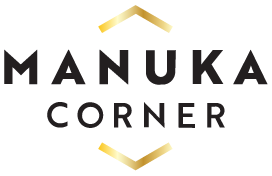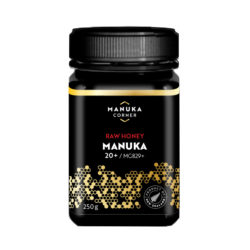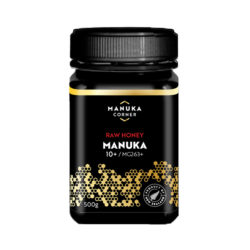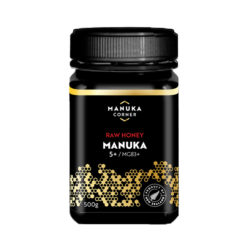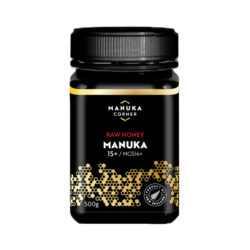Buying manuka honey? UMF or MGO or NPA: you do need to know these buzz words.
If you’re confused, we’re here to clear things up for you.
UMF stands for Unique Manuka Factor. UMF is a quality mark identifying natural unadulterated manuka honey produced in New Zealand. The trademark ensures purity, quality and that the honey contains unique natural properties.
That’s all very well, but what does UMF actually mean?
But what is UMF?
All honeys have antibacterial properties due to a natural mild hydrogen peroxide antiseptic released when an enzyme produced by bees as a preservative in the honey comes in contact with moisture in the body.
However, this “peroxide activity” is easily destroyed by exposure to fluids, heat and sunlight.
But wait, there’s more. Manuka honey has something else that causes its antibacterial effect. During his research into the antibacterial activities of honey, Dr. Peter Molan of Waikato University discovered a unique property of Manuka honey that he termed a “non-peroxide activity” (NPA).
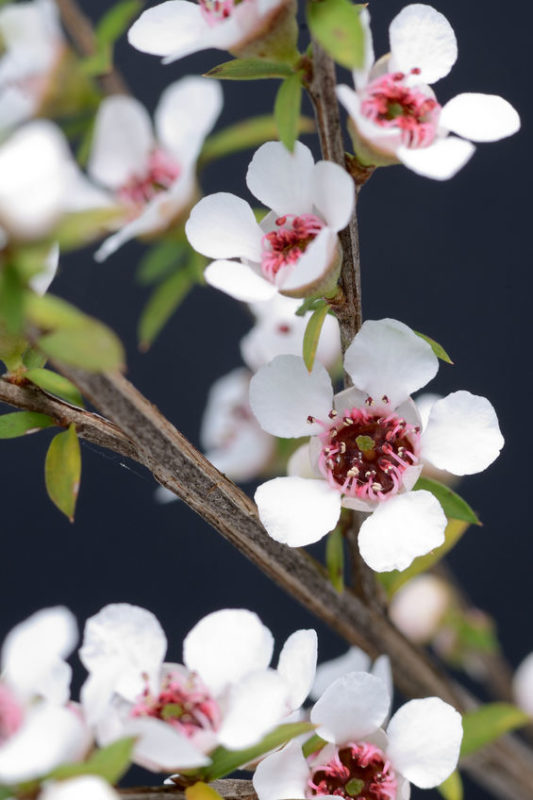
This unique property is what makes manuka honey both more potent and more stable. It comes specifically from methylglyoxal (MGO) found in leptosperin, a naturally occurring chemical found only in the nectar of Manuka plants.
Manuka honey contains very high levels on MGO, doubling its antibacterial activity.
The term “Unique Manuka Factor,” or UMF was coined (and trademarked) to describe this property which varies in strength between different batches of Manuka honey produced in New Zealand. UMF is independently tested, strictly enforced, and directly proportional to the methylglyoxal content and the honey’s corresponding antimicrobial effectiveness.
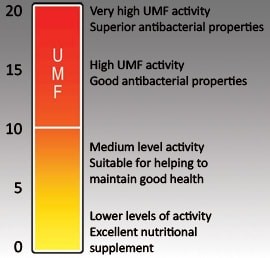
UMF tests for all three naturally-occurring chemical markers of the honey; Methylglyoxal – MGO – the antibacterial element; Dihydroxyacetone – also known as DHA – the age of the honey; and Leptosperin the indicator of genuine Manuka which can only be found in honey from manuka pollen and cannot be fabricated.
UMF ranges from 10 to 25, the higher the rating, the more potent, and of course, the more expensive, the honey. Manuka honey that scores UMF 10+ is considered potent enough for medicinal use.
And what is MGO?
Methylglyoxal is the must-have content in genuine manuka honey. MGO supercharges the beneficial anti-bacterial and anti-inflammatory effects found in all honeys.
Manuka honey contains unique compounds that the bees collect from the nectar of the leptospermum scoparium, manuka. Genuine manuka honey must have a sound measurement of methylglyoxal or MG, MGO or MGL. It is methylglyoxal or MGO that gives manuka honey its wonderful antibacterial properties and makes manuka honey superior to other types of honey for medicinal purposes. The higher the concentration, the more antibacterial activity.
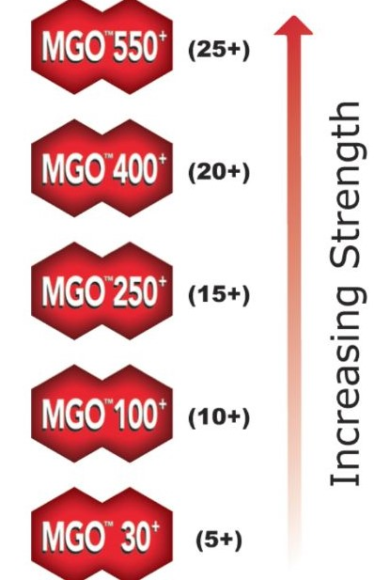
The concentration of methylglyoxal (MGO) in manuka honey ranges between 38 to as much as 1000 mg/kg. The minimum requirement for antibacterial activity in manuka honey is 100 mg/kg or MGO 100.
- MGO™30 (containing 30mg/kg) – table grade
- MGO™100 (containing 100mg/kg) – table grade
- MGO™250 (containing 250mg/kg) – table grade
- MGO™400 (containing 400mg/kg) – antibacterial grade, suited for skin therapy.
- MGO™550 (containing 550mg/kg) – high antibacterial grade, suited for skin therapy.
Dietary methylglyoxal is resistant to heat, body fluids, light, and enzymatic activity, thus considered very stable.
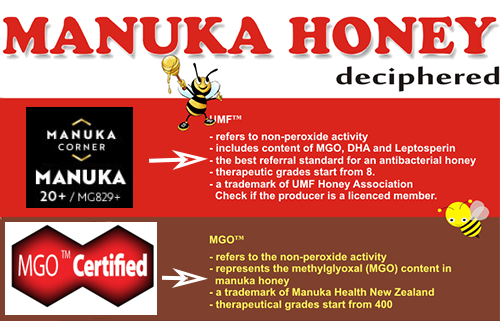
Manuka honey is not good only because of its MGO component, but because of its low pH, high content of sugars, peroxide activity, enzyme and polyphenols content.
Check out our raw NZ manuka honey. It’s lovely, pure honey!
